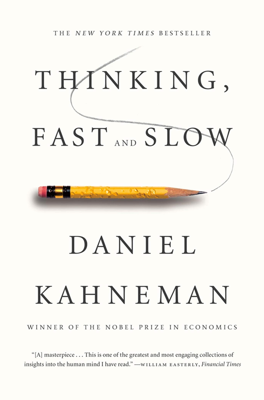Intuitions Vs. Formulas
Intuitions vs. Formulas: The Superiority of Algorithms in Decision-Making
Paul Meehl's Influence on Decision-Making
Paul Meehl's work, "Clinical vs. Statistical Prediction," highlighted how algorithms often outperform human judgment across various studies. Meehl's analysis showed that even for professionals like psychologists and parole officers, predictions based on simple statistical rules were generally more reliable than those based on professional judgment.
Empirical Studies and Outcome Predictions
Empirical evidence supports the superiority of algorithmic prediction across various fields, including medicine, economics, and criminal justice. For example, algorithms have been shown to better predict outcomes such as the success of new businesses, medical diagnoses, and longevity of cancer patients, demonstrating their effectiveness in "low-validity environments" where predictability is uncertain.
Reasons for Algorithmic Superiority
Algorithms excel because they:
1. Are consistently applied and less prone to the influence of momentary context, unlike human judgments that can vary widely with small changes in conditions.
2. Avoid the complexity and potential biases human decision-makers introduce, often leading to more straightforward, reliable decisions.
Studies Highlighting Human Inconsistency
Research, such as evaluations by radiologists and auditors, shows that professionals often contradict their own judgments when presented with the same data at different times. This inconsistency undermines the reliability and validity of expert judgment.
Formulas vs. Human Judgment
Studies argue that decisions, especially in unpredictable environments, should rely more on formulas than on human intuition. Formulas eliminate human inconsistencies and biases, leading to more accurate outcomes. For example, replacing subjective clinical judgments with algorithms in settings like medical school admissions is suggested to enhance decision accuracy.
Robustness of Simple Linear Models
Research by Robyn Dawes emphasizes that even simple linear models, which assign equal weights to predictors without extensive statistical tailoring, often perform comparably to or better than more complex models. This challenges the necessity of advanced statistical methods for developing effective predictive algorithms.
Practical Implications and Applications
The chapter encourages the practical application of Meehl's findings in diverse settings, from selecting personnel through structured interviews to developing algorithms for medical assessments like the Apgar score for newborns, which significantly improved infant care.
Human Resistance to Algorithmic Decision-Making
Despite the proven efficacy of algorithms, there is significant resistance among professionals due to a belief in the superiority of human intuition and judgment. However, ongoing research and the increasing integration of algorithms into various aspects of decision-making (e.g., personnel selection and economic forecasting) should help reduce this skepticism over time.
Personal Anecdote: Military Interview System
The author shares an experience from the Israeli Defense Forces where implementing a structured, algorithmically supported interview system significantly improved the prediction of soldier performance. This example underscores the practical benefits of combining structured data collection with formula-based decision-making.
Guidance for Implementing Decision Systems
For effective decision-making, especially in hiring, it is recommended to select key traits, use structured interviews to collect data objectively, and apply a consistent scoring system. Combining these scores into a formula-based decision rule enhances the likelihood of selecting the best candidates, demonstrating a systematic approach that combines both human judgment and statistical methods.
